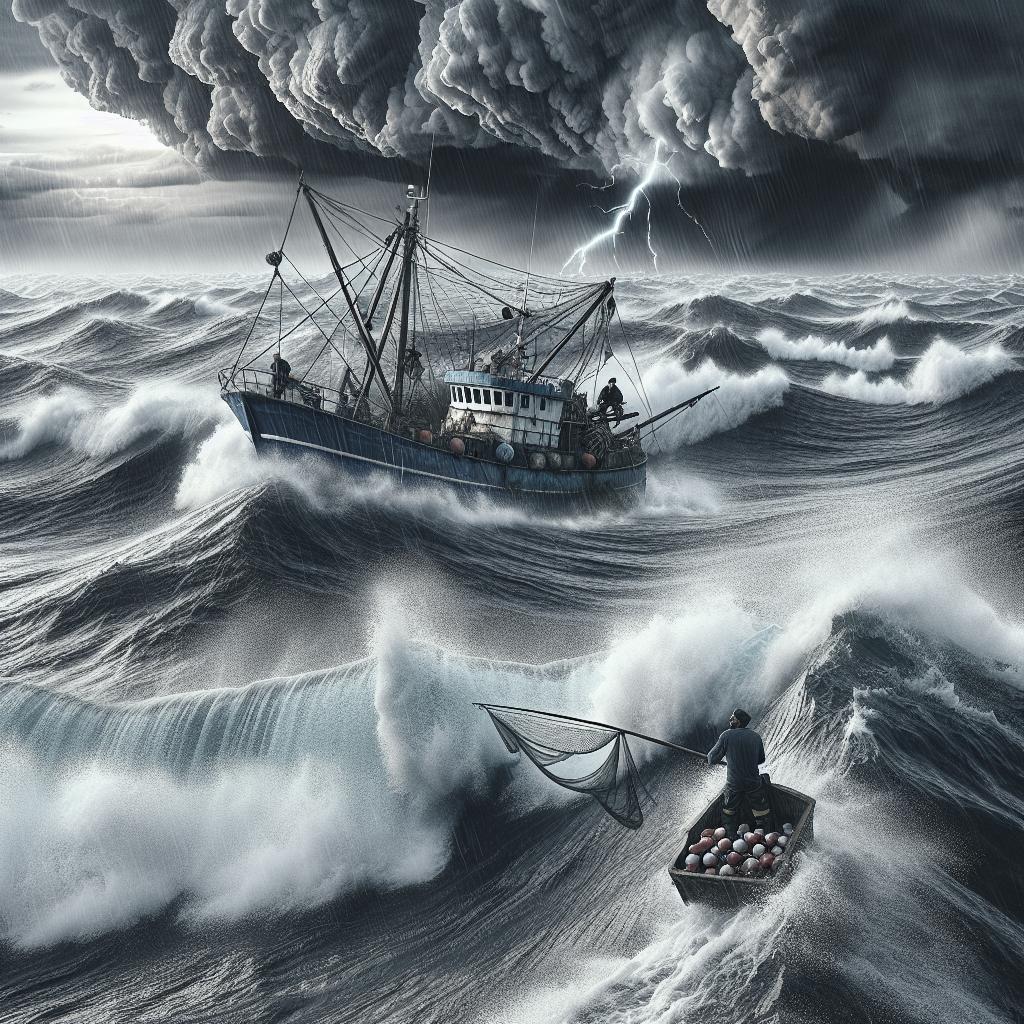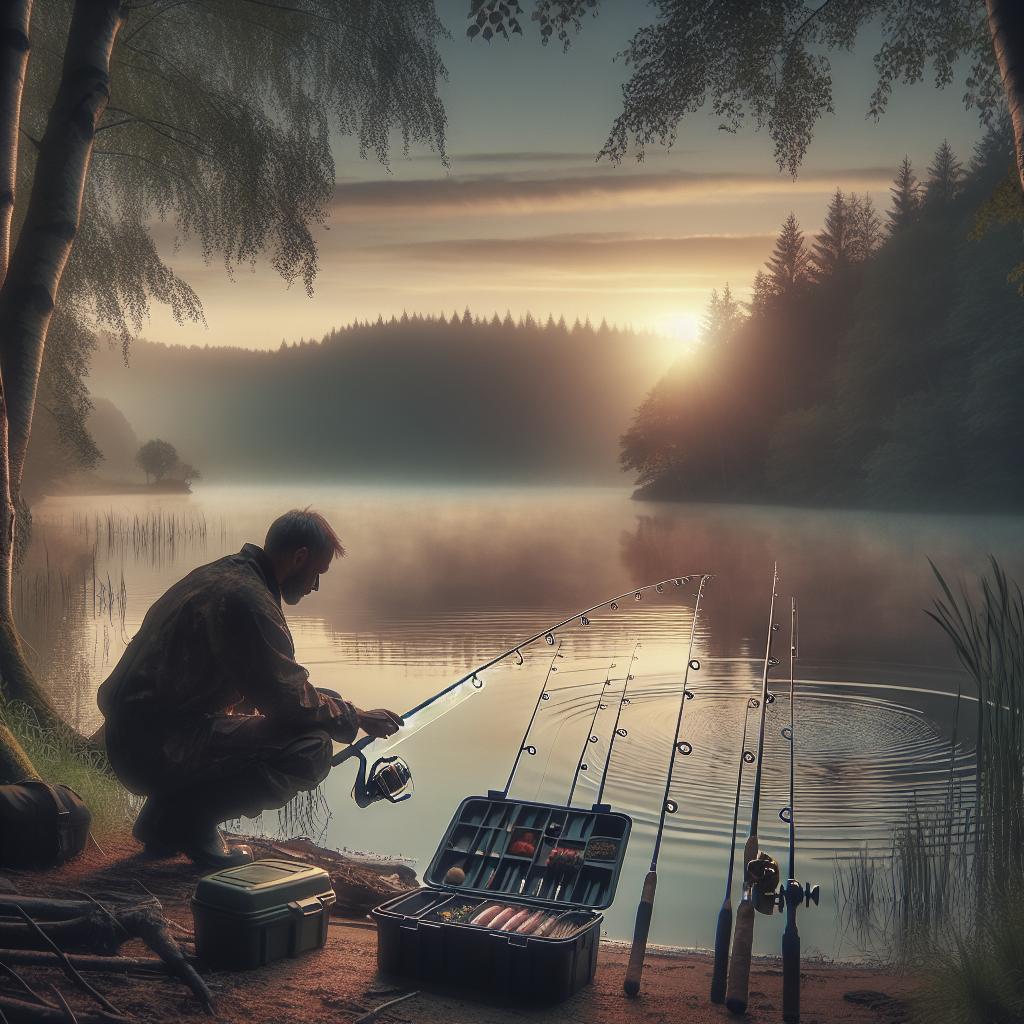“`html
The Impact of Weather on Fishing
Fishing is much more than just a hobby or profession for many; it is a complex interaction between humans and nature. Weather conditions play a crucial role in determining fishing success rates, as they affect fish behavior, making it more or less likely for them to bite. Different weather elements such as barometric pressure, wind speed, sunlight, rainfall, clouds, and temperature can all have a significant impact on fishing. This blog aims to delve into each of these factors, exploring how they influence fishing activities. Additionally, we will offer insights on how to plan a fishing trip efficiently with the help of the Dockside Fishing Center, ensuring that weather conditions work in your favor. By understanding the relationship between weather and fishing, anglers can improve their catch rates and enhance their overall fishing experience.
Barometric Pressure
Barometric pressure, or atmospheric pressure, is a significant factor influencing fish behavior. When pressure changes, fish often respond by altering their depth and activity levels. Low-pressure systems, typically associated with cloudy and rainy weather, often see fish becoming more active and moving towards shallower waters to feed. This increased activity can enhance anglers’ chances of a successful catch.
Conversely, high-pressure systems usually result in bright and sunny conditions, which can cause fish to become lethargic and retreat to deeper, cooler waters, making them harder to catch. An understanding of barometric pressure trends can therefore assist fishermen in predicting fish activity and choosing the best times to fish.
Wind Speed
Wind speed is another crucial element that can make or break a fishing trip. Wind affects water currents, which in turn influence the movement and behavior of fish. A gentle breeze can create surface disturbances that encourage fish to feed closer to the surface, as it stirs up nutrients and plankton that attract baitfish.
Strong winds, however, may make fishing difficult, as they can cause safety concerns and affect casting accuracy. Nevertheless, fishing with the wind can lead to successful catches if one is strategic about positioning and takes advantage of natural drift patterns.
Sunlight
Sunlight has a direct impact on underwater visibility and temperature, both of which affect fish behavior. On sunny days, fish are more likely to seek the cooler and darker sections of the water to avoid predators and regulate their body temperature.
However, certain species are more drawn to sunlight, especially during dawn and dusk, when the sun’s rays are less intense. Understanding how sunlight affects fishing in different seasons and times of the day can guide anglers in finding the optimal fishing spots.
Rainfall
Rainfall can dramatically alter fishing conditions. Light rain can benefit fishing by reducing water clarity, which in turn makes fish less cautious about approaching bait. Additionally, rain helps oxygenate the water, leading to increased fish activity.
However, heavy rain can lead to runoff, which might disturb the aquatic environment and decrease visibility. It can also cause safety issues for anglers. Thus, monitoring rainfall patterns and intensity is advisable for a successful fishing expedition.
Cloudy Conditions
Overcast skies, often a result of cloud cover, can be advantageous for fishing. Clouds diffuse sunlight, making fish feel safer while feeding closer to the surface without worrying too much about predators. Cloudy conditions often extend the fishing “golden hours” beyond the usual dawn and dusk periods.
For these reasons, many anglers prefer cloudy days to fish, as they can offer steady action throughout the day. Planning fishing trips around weather forecasts that predict overcast days might result in better outcomes for fishermen.
Temperature
Water temperature is a critical element that determines fish metabolism and activity levels. Fish are cold-blooded creatures, meaning their body temperature is regulated by the surrounding water. Therefore, fish tend to be more active in waters where they can maintain an optimal body temperature.
Each fish species has its own temperature preference, which aligns with their spawning and feeding habits. Knowing these preferences allows anglers to select the right times and locations based on past temperature patterns and forecasts.
Sudden Changes in Weather
Sudden weather changes can have a dramatic impact on fishing. Rapid shifts in temperature, wind, or barometric pressure can disorient fish and cause them to temporarily change their usual behavior. For instance, a cold front moving in quickly can push fish deeper and make them less likely to bite.
Being prepared for and able to adapt to sudden weather changes can turn an average fishing trip into a successful one. Experienced anglers know how to respond to these changes, choosing the best spots and techniques to align with the altered conditions.
Plan Your Trip With Dockside Fishing Center
The Dockside Fishing Center offers a wealth of resources and expertise to help anglers align their fishing plans with the weather. By utilizing their professional guides and up-to-date equipment, one can optimize fishing strategies according to current and forecasted weather conditions.
Dockside Fishing Center provides real-time weather updates and expert advice on the best practices suited for the day’s conditions. Planning your next fishing trip with their assistance can improve both safety and catch rates, making for a more enjoyable and productive experience on the water.
Lessons Learned
| Weather Element | Impact on Fishing |
|---|---|
| Barometric Pressure | Low pressure increases fish activity; high pressure can make fish lethargic. |
| Wind Speed | Moderate wind enhances feeding; strong wind complicates fishing. |
| Sunlight | Influences fish movement; optimal during low-light hours of dawn and dusk. |
| Rainfall | Light rain aids fishing; heavy rain can cause ecological disturbances. |
| Cloudy Conditions | Extends favorable fishing hours by reducing sunlight penetration. |
| Temperature | Impacts fish metabolism and feeding; knowledge of optimal temperatures is key. |
| Sudden Changes in Weather | May cause erratic fish behavior; adaptability is essential. |
“`


